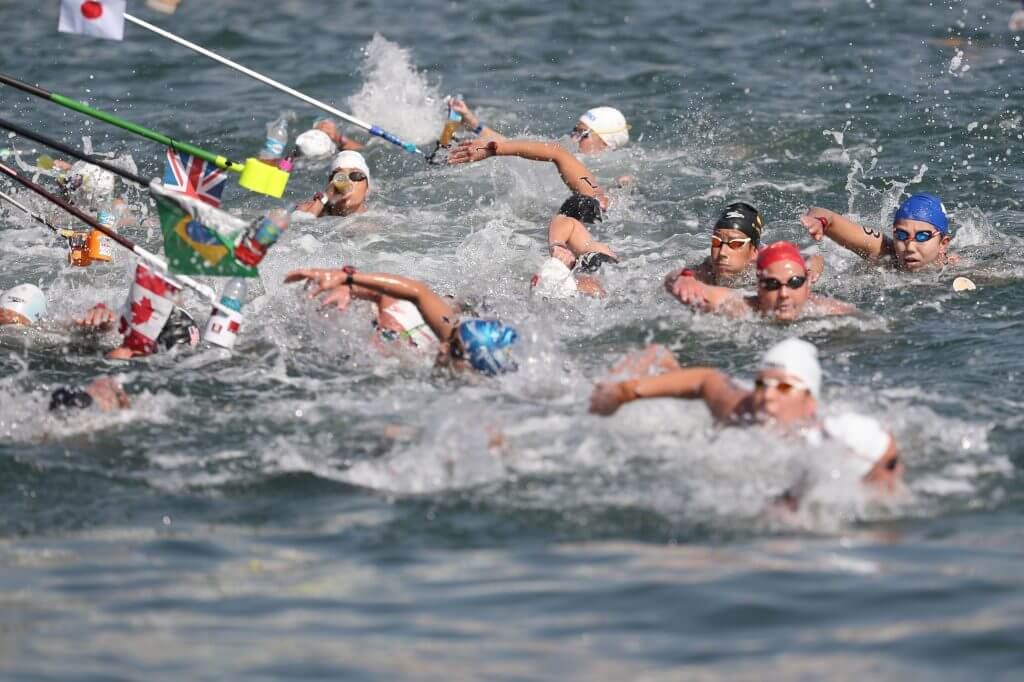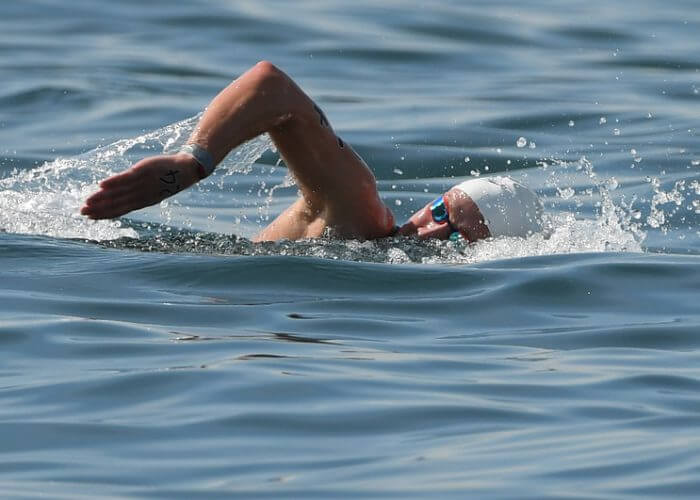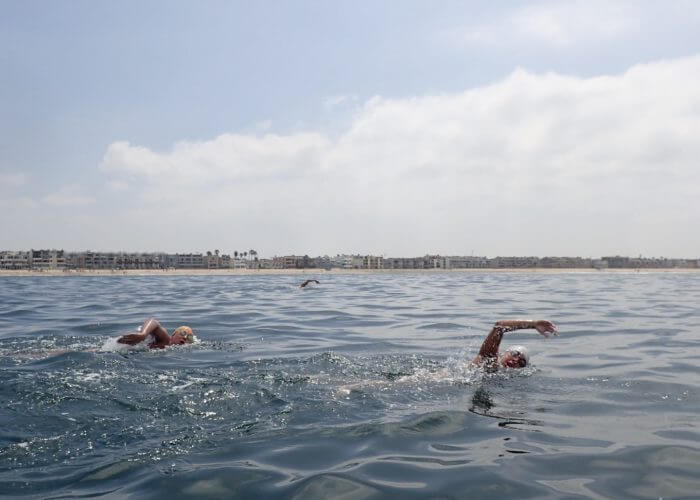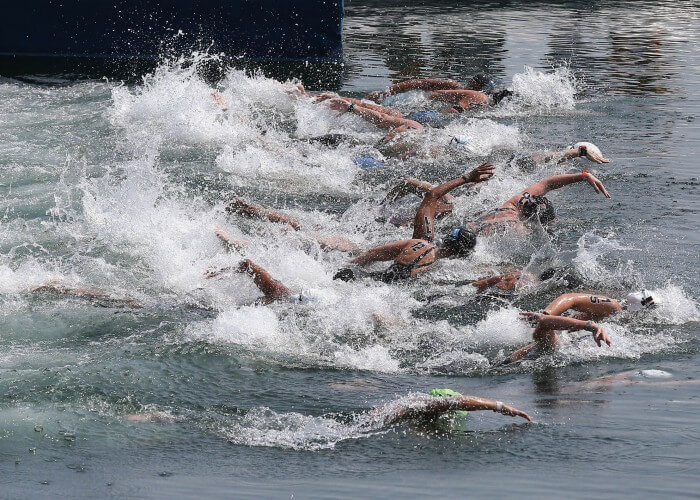Top Open Water Swimming Fears Debunked

By Norah Hunt, Swimming World College Intern.
The summer brings with it many opportunities to swim outside. Many athletes inevitably latch onto open water swimming, a type of racing that is so vastly different from regular competitive swimming. It could be argued that the two are completely different sports. Open water is, in a word, extreme. Swimming in a pool is a relatively controlled environment; swimming in a lake or a river is almost a battle against the elements, and there are many unfortunate things that can go wrong in an open water race that would not happen in a pool.
Nevertheless, there is a certain group of die-hard open water enthusiasts that come out on race day, again and again. How do they do it? Simply put, they have figured out how to put aside their fears and find a way to truly thrive in this adrenaline-filled environment. Here are the top open water fears that swimmers struggle with, and ways to conquer them, so that every athlete has the chance to become a phenomenal open water swimmer:
I can’t see the bottom.
By far the most common fear, especially for younger swimmers. The black line at the bottom of a pool is like a security blanket; we feel lost without it. It guides us to the wall; it takes us home. Without it, there is no way to know how far down the bottom is, and who knows what creatures are lurking down there, ready to eat a young swimmer up?
The simple fix to this problem is to just not think about the bottom, plain and simple. Many experienced open water veterans will testify that, in the midst of a race, the bottom of the lake or river is the last thing going through their heads. These events are a bit of a sensory overload, and there are so many other things to think about!
Oftentimes, swimmers will be so focused on making it to the next buoy or keeping their stroke in rhythm that they completely forget about what lies below them, which is probably the best way for it to be. If the swimmer truly cannot think past where the bottom is, then it sometimes helps to imagine swimming in a four foot lake. The floor is right below them, it is just a little out of sight!

Photo Courtesy: Jack Gruber-USA TODAY Sports
The races are so long.
This fear gets tossed around a fair amount, especially by swimmers that specialize in the shorter races. There is some validity to this statement, after all, as most open water races are significantly longer than any done in a pool.
However, these races go by much faster than one might originally think. For one, swimmers are not mindlessly going back and forth. They are traveling from one part of a lake or river to another. There is the idea of movement, and gradually getting closer and closer to a buoy makes the swim feel much shorter.

Photo Courtesy: Eliza Cummings
I don’t know where I am going.
This is another valid fear, but an easily solvable one. The courses in these races are much more complex than what swimmers are used to (a simple black line). Nevertheless, it is relatively easy to follow along the route, and if a swimmer is truly lost, it is very easy to follow someone ahead of them or flag down a boat to ask directions.

Photo Courtesy: Tom Szczerbowski/USA Today Sports Images
Other swimmers run into me.
This is perhaps the biggest adjustment one must make when they go from pool swimming to open water races. Lanelines guide us, but they also keep swimming from becoming a contact sport. In open water races, there is splashing and shoving and sometimes even kicking! Swimmers will get penalized if they are too rough, but the officials obviously cannot watch everything that happens below the surface.
Open water races are an absolute blast. As these fears show, they are much more complex than regular pool races, but that is part of the fun! There are so many stories that you will get from your open water experience, and being outside is always better than the concrete pool we normally swim in! Go find your race!
All commentaries are the opinion of the author and do not necessarily reflect the views of Swimming World Magazine nor its staff.



